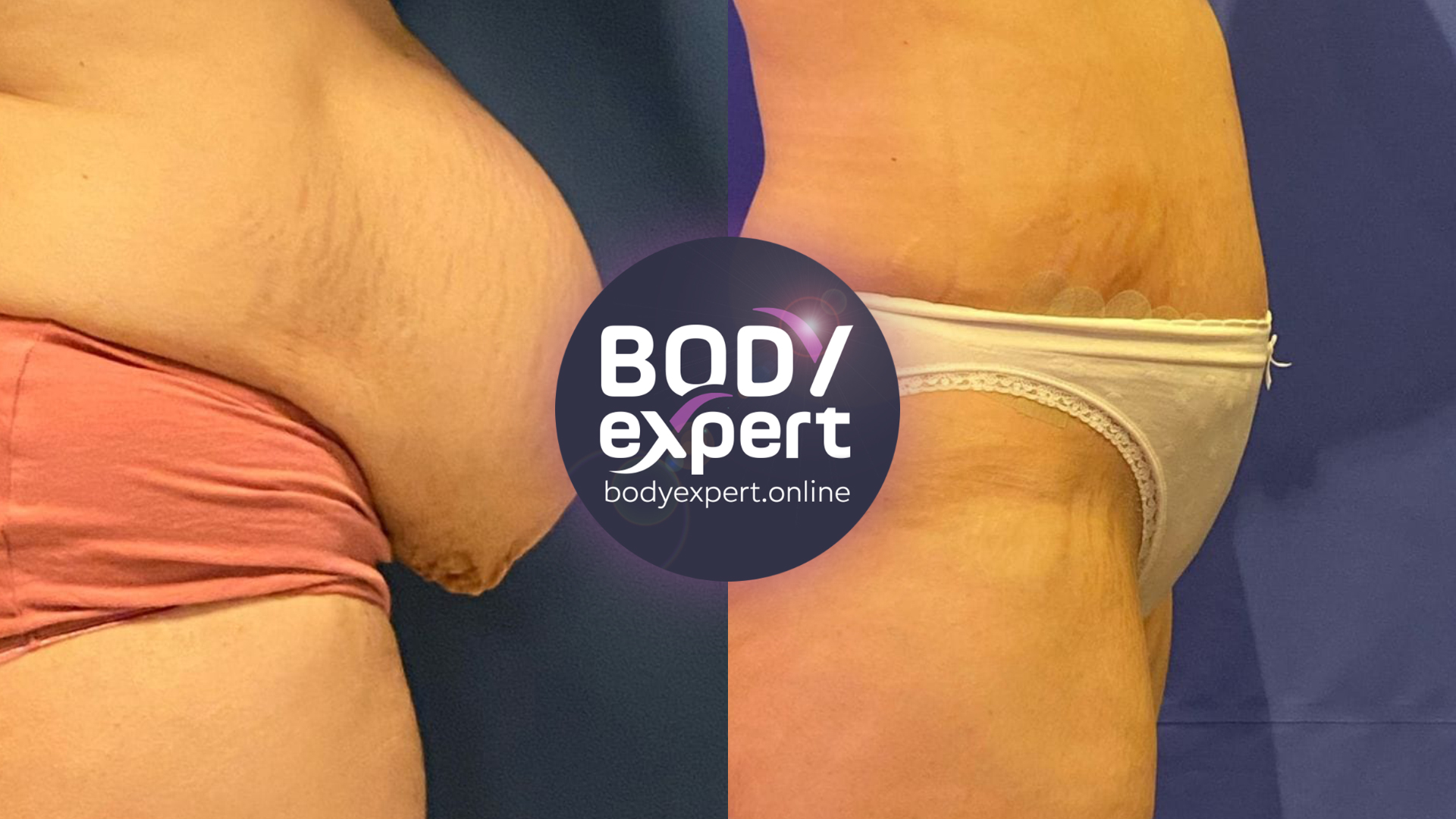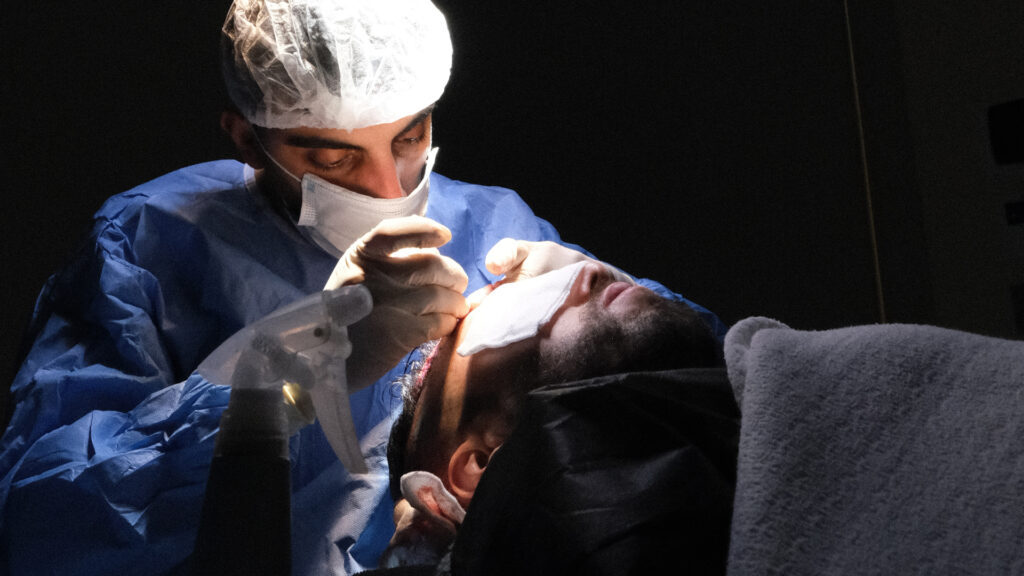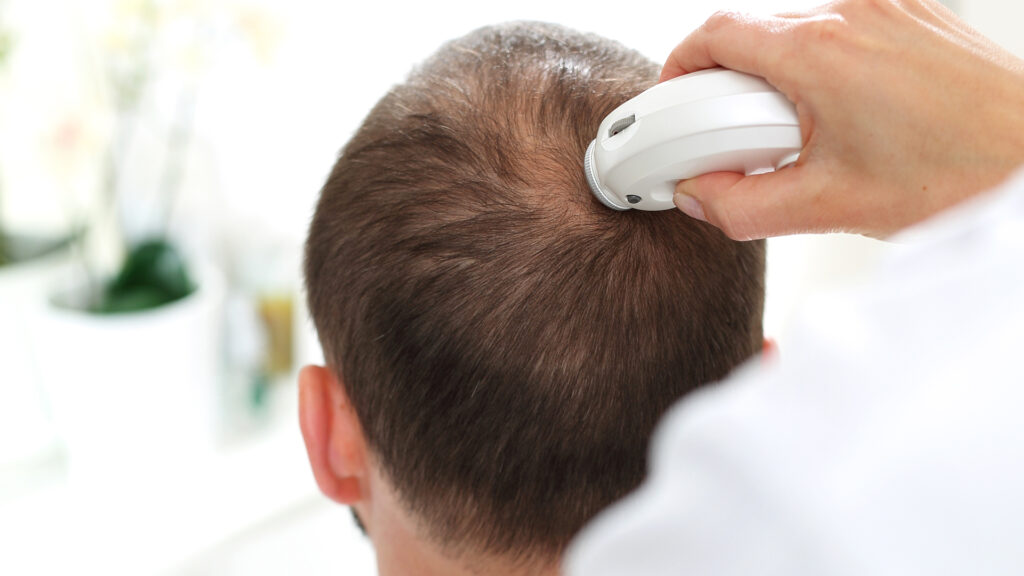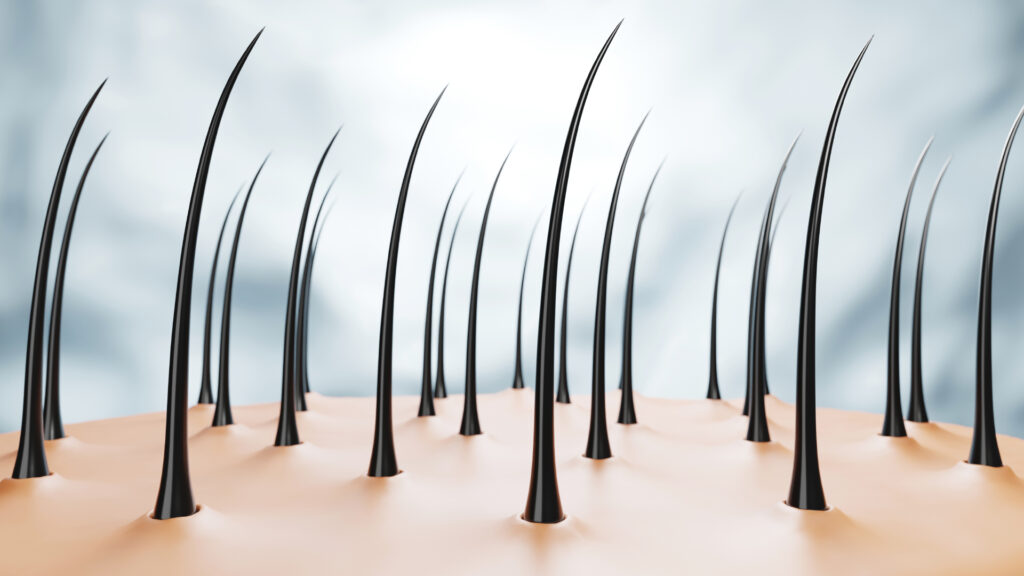The European population is increasingly facing challenges with overweight and obesity. The World Health Organisation reports that 63% of men, 54% of women, and one in three children (29% of boys and 27% of girls) in are now affected by this health issue.
To regain a healthy weight, adopting a healthier diet and consistent exercise are crucial. However, making and sustaining these lifestyle changes can be challenging. The World Health Organization (WHO) has highlighted the “obesogenic” environment that prevails in developed countries. Both adults and children are constantly exposed to an abundance of food and sugary drinks, coupled with seductive advertising from the food industry. The rise of digital screens and food delivery apps promoting hyper-processed food encourages sedentary behaviour, all of which negatively impact our health.

The rise in overweight individuals has led to an increased demand for medical care; obesity is estimated to cause over 1.2 million deaths annually in Europe. As a result, bariatric surgery, a weight-loss procedure, is gaining popularity. Though effective, the rapid weight loss from this surgery often results in sagging and distended skin. Although the individual may achieve a healthy weight, their body often requires further procedures to attain a more harmonious appearance by removing the excess skin. This leads many to seek post-bariatric reconstructive surgery, which entails various skin-lifting procedures.
In the UK, the National Health Service (NHS) does not cover these follow-up operations, classifying them under cosmetic surgery. Due to the high costs at UK cosmetic clinics, many patients opt for medical tourism to find affordable alternatives. A significant number are drawn to Istanbul, Turkey. The specialized clinics offer prices 60 to 80% lower than in the UK. Moreover, these clinics in Istanbul are more affordable and have a strong track record, backed by extensive medical experience and a stellar international reputation.

Why is reconstructive surgery often necessary after bariatric surgery?
Bariatric surgery encompasses a range of medical procedures, such as gastric bands, sleeves, and bypasses, designed to alter the digestive system. This assists individuals with obesity in achieving rapid and lasting weight loss. It’s often considered a last resort for those who haven’t found success with traditional weight loss methods like diet and exercise. However, the surgery leads to notable physiological changes. The rapid weight loss can result in overly stretched skin, leading to extensive stretch marks and sagging folds. These folds not only affect the patient’s appearance but can also become sites for skin infections if not kept clean.
To address these issues, many patients opt for post-bariatric recovery surgery following their weight loss. This suite of surgical procedures removes the excess skin, helping patients achieve a more proportionate and aesthetic figure. The resulting improved physical appearance often goes hand-in-hand with a boost in self-esteem.

Types of Reconstructive Surgeries After Major Weight Loss
Reconstructive surgeries play an essential role after major weight loss, addressing various areas of the body, including the stomach, legs, knees, arms, back, chest, and neck. The overarching goal is to “redrape” the body by removing excess skin and tightening the remaining skin to provide a more natural and youthful appearance. Stretch marks, another byproduct of significant weight gain, may also require treatment. Generally, these surgeries require general anaesthesia, except for specific areas or less invasive procedures like mini-lifts.
Abdominoplasty: Eliminating Excess Abdominal Skin and Fat
Abdominoplasty, commonly known as a tummy tuck, is a surgical procedure designed to remove surplus skin and fat from the abdomen. It also aims to restore the abdominal wall, particularly when there is an abdominal apron—excessive skin that drapes over the pubic area. The result is a rejuvenated, firmer abdominal region. Unlike liposuction, which is less invasive, abdominoplasty is generally performed in a clinical or hospital setting under general anaesthesia.

Covering the area of the abdomen between the upper abdomen and the pubis, a simple tummy tuck requires a horizontal incision between the navel and the pubis to remove skin and excess fat that has resisted dieting. The abdominal wall is then reconstructed, before the abdomen is sewn back together. After bariatric treatment, a full abdominoplasty is performed. The patient has extensive damage to the skin of the abdomen, with significant distension, visible stretch marks and a withered abdominal wall (diastasis of the rectus abdominis muscles, umbilical hernia) due to excess weight. A longer abdominal incision is then necessary, between the two hips, followed by an umbilical incision, for the transposition of the navel, and thus an additional scar around the navel.

A full tummy tuck includes liposuction of the abdomen, back and flank fat, followed by a skin lift between the pubic area and the navel, allowing the skin to be tightened. The dermolipectomy, consisting of removing the excess skin, is then performed before the skin is re-draped. This re-draping, or tummy tuck, is performed using the so-called “high tension” technique: less invasive, it better distributes the tensions of the epidermis, to relieve the tensions on the scar, which will then be thinner, hidden under the bikini line. The operation takes between 2 and 5 hours, depending on the case. The convalescence takes between 4 and 6 weeks, and the result is visible after about 3 to 6 months.

Mammary Surgery: Breast Correction and Enhancement Post Weight Loss
After significant weight loss, individuals may experience sagging breasts, known as breast ptosis, or a loss of breast volume. A variety of surgical options exist to correct these issues for both men and women. Factors such as skin tone, breast shape, areola position, and chest size guide surgical decisions. Digital simulations based on photographs can help patients visualize potential outcomes.

Breast Reduction and Lift (Mastopexy)
Patients who have lost a lot of weight may opt for breast reduction surgery to both reduce breast size and lift the breasts. A breast lift or mastopexy corrects asymmetry, removes excess skin, and tightens sagging breasts. This procedure requires general anaesthesia and lasts between 1 to 3 hours. The type of incision—whether areolar, vertical, or inverted T—depends on the degree of sagging and excess skin. Hospital stays range from 2 to 4 days for post-operative drain removal. Patients must wear a support bra day and night for one month, with final results visible in 2 to 3 months.

Breast Enhancement Options
Breast Lipofilling
For those looking for a natural look without a significant volume increase, breast lipofilling offers a less invasive alternative to implants. Fat cells harvested from other body parts (like the stomach, thighs, or hips) are processed and reinjected into the breasts. This technique provides lasting results and doesn’t interfere with mammogram readings.

Silicone and Saline Implants
For those seeking breast augmentation, cohesive silicone implants and saline-filled implants are options. These vary in firmness and safety in case of rupture. Several choices are available for each cup size, with considerations for skin texture and tone to avoid natural sagging.
Gynecomastia Surgery
After substantial weight loss, men may also undergo gynecomastia surgery to reduce breast size. The fat is removed through fine cannulas, and the breast is then reshaped. Typically a non-invasive, one-hour procedure under local anesthesia it leaves no scars.

In cases where the mammary gland is large or painful, a mastectomy may be performed with an areolar incision. This procedure may also include a breast lift to correct sagging skin. The hospital stay for this procedure is a minimum of 24 hours and requires general anaesthesia. Final results are generally visible after 4 to 6 weeks.
Thigh and Calf Lift: Post-Bariatric Surgical Solutions for Excess Skin
For those who have undergone significant weight loss, sagging skin and stretch marks on the thighs and calves can be concerns. Thigh lift surgery, also known as cruroplasty, is a delicate procedure designed to address these issues. Often paired with calf lifts and even knee surgery, these interventions aim to restore the natural shape of the legs.
Thigh Lift (Cruroplasty)
The approach to a thigh lift is influenced by how the excess skin is distributed.
- Horizontal Incision: If the excess skin is distributed lengthwise along the thigh, a horizontal incision is made to pull the skin upwards.
- Vertical Incision: A vertical incision is made along the inner thigh if the excess skin is spread out in width.
These techniques are often combined and can be preceded by liposuction to remove any excess fat under the incision area. The cruroplasty procedure generally takes 2 to 4 hours, requires general anesthesia, and involves a hospital stay ranging from 24 hours to 3 days.
Calf Lift and Liposuction
The calves can sometimes resist weight loss efforts, and a calf lift may be recommended. This procedure is often performed in the same surgical session as a thigh lift and can be preceded by calf liposuction to remove excess fatty tissue.
Knee Liposuction
Sometimes, liposuction may also be extended to the knees to restore them to their natural shape and remove any resistant fatty tissues.
By considering these surgical options, individuals can achieve a more toned and natural appearance of their thighs, calves, and knees following significant weight loss.

Buttock lift: a firm and toned appearance
The buttock lift is an increasingly common cosmetic surgery procedure. It allows the buttocks to be lifted, the lower back and the side of the thighs to be lifted, and excess skin to be reabsorbed, while restoring roundness and firmness to both buttocks by means of a liposculpture technique, also known as Brazilian Butt Lift (BBL). When the operation is coupled with an abdominoplasty, particularly in the context of post-bariatric surgery or in the case of significant weight loss, it is called a body lift.

Two types of incisions, which can be combined according to the patient’s needs, are performed. The upper buttock lift consists of a wide incision in the lower back along the bikini line, while the lower lift requires an incision, also in the width direction, placed in the groove under the buttocks. For a buttock lift, the fatty tissue is preserved and placed under the detached skin of the buttock, to give it back its shape, and the skin is draped by being stretched upwards. The skin of the back is stretched downwards, while liposuction is used to remove excess fat that has resisted the diet.
The operation is performed under general anesthesia, with a hospital stay of 1 to 3 days. If the final result can be seen after about 6 weeks, the re-tensioning of the skin allows, immediately after the operation, to have a spectacular effect. As for the scars, they remain very discreet at the level of the bikini line and the sub-gluteal fold.

Arm lift or brachioplasty: avoiding the “bat wing” effect
The inner face of the arms, especially in women, reveals a thin skin, which is less resistant to significant weight changes and creates a noticeable skin sagging after a strong weight loss. Excess fat may also remain, which must be removed with liposuction of the arms. Once the fatty tissue has been removed, the surgeon removes the excess skin and then tightens the skin. Brachioplasty is most often performed with a vertical scar along the inner side of the arm, and/or with a horizontal scar under the armpit, if the loose skin does not extend to the elbow. Here again, a minimum of 24 hours’ hospitalization is essential, as the operation is generally performed under general anesthetic. Wearing a support cuff will be necessary for several weeks after the operation, to promote skin retraction.

Face and neck lift for a more youthful appearance
The face and neck are areas directly affected by radical weight loss. Thin distended skin sags and creates folds, which can appear unsightly and require a facelift, especially as it is more exposed to the gaze of others. Known in medical terms as a rhytidectomy or iridectomy, a face and neck lift is a cosmetic surgery procedure designed to correct sagging skin, usually due to aging. The operation may include liposuction of the neck, to remove excess fatty tissue. This can be performed using new techniques that use ultrasound to more easily and quickly remove fatty deposits.
The skin of the lower face is surgically pulled, and the upper face is rejuvenated with several combined methods, such as hyaluronic acid or botulinum toxin injections. Surgical correction of the face is complex, sophisticated, and must render the most natural result possible.
Stretch mark treatment: a combination of techniques
After obesity or being overweight, the skin, having been subjected to too much tension which has literally made it “crack” from the inside, is often covered with stretch marks, especially in women. They particularly affect the thighs, buttocks, hips, but also sometimes the breasts, arms, neckline, etc. To erase them, many treatments are recommended after significant weight loss.
Microdermabrasion, laser and deep peelings burn the skin, more or less deeply, in order to trigger a renewal of the skin cells and offer a new skin. These deep exfoliation techniques are however difficult for the patient, because for a variable result, the burnt skin is covered with scabs for almost two weeks, and must be protected with dressings to avoid infection or exposure to the sun.

Combination treatments are preferred by specialists, with results as good as or better than deep exfoliation. These combined treatments include carboxytherapy (injection of medical C02 under the skin to stimulate the production of elastin and collagen), mesolift (micro-injections of a mixture of amino acids, hyaluronic acid and vitamins), microneedling (micro-needles covering the skin area with tiny holes to stimulate cell regeneration) and radiofrequency (emission of very high frequency electromagnetic waves) which, like carboxytherapy, stimulates fibroblasts. Another new technique that is very effective against stretch marks is cold plasma, a process that converts molecular oxygen into electrically charged atoms, again to stimulate the production of elastin and collagen.
All of these techniques can be complemented by LED light therapy sessions, which stimulate the deep layers of the skin with light (photobiostimulation). According to Afme (French association of aesthetic medicine), the best combinations against stretch marks are the combination of carboxytherapy, radiofrequency and LED phototherapy sessions, or microneedling, peeling and LED sessions. However, patience is required, as many successive sessions are necessary for the stretch marks to gradually disappear.

When should I start my post-weight loss reconstructive surgery?
After a very significant weight loss, it is important to keep your figure: having regained and maintained a stable weight is a decisive victory. To start a course of reconstructive surgery, the patient must have stabilized his or her weight for 3 to 6 months and his or her new life – with diet and physical maintenance – must have taken on a routine rhythm. Only then can the patient begin the course of reconstructive surgery.
The various interventions can be relatively long and hard on the body. As obesity and its cardiovascular consequences may have weakened the cardiac system, these surgeries are not suitable for patients with high blood pressure or for people with diabetes. Finally, like any surgical intervention with general anesthesia, reconstructive surgery involves certain risks, which every surgeon must expose to his patient: infections, skin necrosis, haematomas, thrombosis, pulmonary embolism, etc…

As several parts of the body can be affected by skin lifts, it is necessary to plan a treatment over several months, or even a year, comprising different interventions, with a sufficient healing time – usually several weeks – between them. In addition, these skin lifts create scars, which are becoming more and more discreet thanks to the constant progress of medicine, but which should be protected from the sun. It is therefore better to start your reconstructive surgery in the autumn, so that you can be free and feel good about yourself the following summer, and enjoy the pleasures of summer life.

Is reconstructive surgery reimbursed by National Health systems?
If NHS reimburses bariatric surgery according to different criterias (weight of the patient and if other health issues such as diabetic are connected to the patient’s overweight conditions), post-bariatric reconstructive surgery is considered as esthetic surgery, and thus, not refunded. Even though the need for reconstructive surgery is proven by the physical and psychological discomfort that patients who have undergone bariatric surgery may suffer. Accordingly, patients who need overweight recovery surgery turn to medical tourism and undertake their post-bariatric journey abroad, in countries where cosmetic surgery operations are much more affordable, such as Turkey.

Why perform these reconstructive surgeries in Turkey?
Several reasons lead thousands of people to turn to Turkey for their plastic surgery after a major weight loss. The price is obviously the first argument, with rates 60 to 80% cheaper than in France. The quality of care and medical infrastructure and the experience of Turkish surgeons in this field have an international reputation. To organise your medical trip more easily, it is best to use an approved medical tourism agency such as Body Expert. Located in the heart of Istanbul, working with the best medical experts offering the best quality/price ratio and all the guarantees of hygiene and post-operative follow-up, Body Expert takes care of everything: accommodation, transfers, preparation of medical files and making appointments in a particularly short time. An assistant translator offers personalized support from the beginning to the end of the medical stay. In case reconstructive surgery needs several lifting operations performed during several different trips to Istanbul, the savings will be so important that they will easily cover all the expenses of those journeys.


6900 vues
0 commentaires
2






Il n'y a pas de commentaires pour le moment.